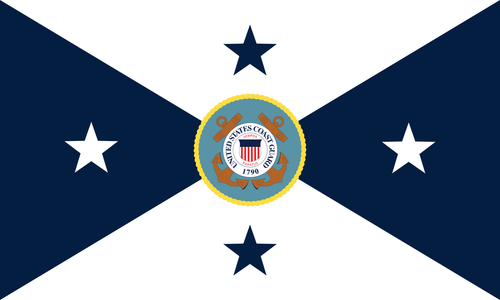Product Description
Show your support and pride with the Official Coast Guard Auxiliary Ensign Flag, crafted from durable and vibrant printed nylon. This flag is designed for both indoor and outdoor display, featuring the official design of the U.S. Coast Guard Auxiliary.
Features:
- Durable Material: Made from high-quality printed nylon, ensuring long-lasting vibrancy and resistance to the elements.
- Official Design: Features the authentic Coast Guard Auxiliary ensign, perfect for displaying your affiliation with the Auxiliary.
- Size and Versatility: Measures 3' x 5', ideal for flagpoles of various sizes or for decorative purposes.
- Header and Grommets: Equipped with a strong header and brass grommets for easy attachment to any flagpole.
- Indoor/Outdoor Use: Suitable for both indoor and outdoor display, perfect for homes, offices, or events.
The U.S. Coast Guard Auxiliary was formed in 1939 to provide a civilian reserve to support the Coast Guard's ability to cope with the boom in recreational boating in the United States. It is an unpaid, voluntary organization of boaters, aircraft owners, and others who make their equipment available to support any of the Coast Guard's statutory missions, focusing particularly on boating safety education and inspections. The basic unit of the auxiliary is the local flotilla, composed of at least 10 vessels. Flotillas are grouped into divisions, which are in turn grouped into districts corresponding to the district structure of the regular Coast Guard.
Boats, aircraft, and radio stations belonging to members of the Coast Guard Auxiliary and meeting standards of equipment and training set forth by the Commandant of the Coast Guard are designated "operational facilities" and authorized to display the Coast Guard Auxiliary ensign. This flag is medium blue with a broad white diagonal band and the Auxiliary emblem in blue and white on the center (33 CFR 5.47). It is known among members as the "blue ensign." It is flown both day and night when the Auxiliarist is aboard, at the main truck if the vessel has a mast or at the bow staff if it does not. Boats equipped with a radio antenna but no mast may fly the Auxiliary ensign on it, about two-thirds of the way up.







